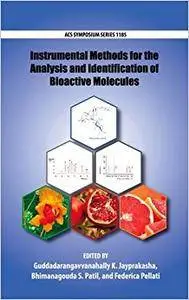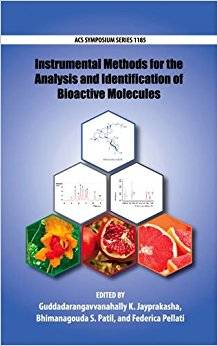Guddadarangavvanahally K. Jayprakasha, Bhimanagouda S. Patil, Federica Pellati, "Instrumental Methods for the Analysis of Bioactive Molecules"
English | 2016 | ISBN: 0841229767 | PDF | pages: 370 | 6.6 mb
English | 2016 | ISBN: 0841229767 | PDF | pages: 370 | 6.6 mb
The main purpose of this book is to discuss cutting-edge research techniques in the field of biologically active compounds derived from plants and foods, and in particular to describe advanced instrumental methods for the identification and quantification of these important compounds. Natural products are used worldwide to prevent and treat various diseases. The efficacy and safety of natural products require the development and application of reliable analytical methods to regulate and control usage. Because of their complex chemical compositions, natural products often require separation techniques for reliable analysis of their constituents. This book provides an integrated approach to address the separation, identification, quantification and chemistry of natural products for their analysis through various instrumental analyses.
This book is divided into four sections: 1) Sample Preparation, Separation and Identification 2) Identification by LC-MS and LC-NMR 3) Identification by GC, GC-MS, LC-GC and Spectroscopic Methods and 4). Metabolomic Fingerprinting. The first section covers sample preparation, extraction and rapid flash separation techniques, rapid LC analysis with bioassays and hyphenations to identify active constituents. The second section covers chromatographic separation by LC for active constituents, identification by mass spectra, and LC-NMR for the characterization of specific constituents. The third section covers separation of volatile constituents by GC and GC-MS. In recent years, analysis of volatiles using headspace has become more sensitive and popular, as it does not alter the original composition of volatile chemicals. The fourth section focuses on metabolic fingerprinting techniques. Metabolomics involves the study of small molecules from cells, plants, foods, tissues, organisms, or other biological tissues. Metabolic fingerprinting compares patterns, also called signatures or fingerprints of metabolites; these patterns change in response to external stimuli either in different plant varieties or species, or in response to adulteration, toxins, drug exposure, environmental or genetic alterations.
This book comprehensively provides a current review that will be useful for scientists, researchers, teachers, and engineers in general, and is particularly useful for chemists, biochemists, chemical engineers, biochemical engineers, and others in chemistry-related fields.



